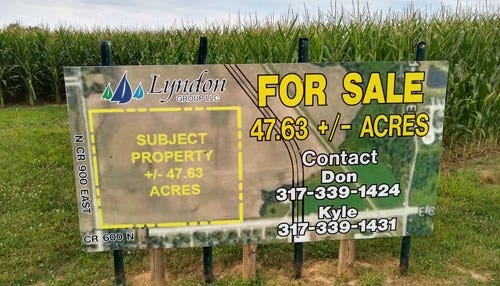Purdue: Farmland Values Decline Fifth Straight Year
 Purdue says 2019 farmland values have dropped for the 5th straight year
Purdue says 2019 farmland values have dropped for the 5th straight year
Subscriber Benefit
As a subscriber you can listen to articles at work, in the car, or while you work out. Subscribe NowThe value of top-quality farmland in Indiana has declined continuing a five-year trend, according to the latest data from Purdue University. The statewide average of the best cropland is $8,212 per acre, down more than five percent, or $456 per acre, from the same period last year.
Purdue’s survey shows average and poor-quality farmland values also dropped, but not as much. Average quality farmland declined by 0.9 percent. Purdue says the poor-quality farmland decline was so small it resulted in a 0.0 percent change.
The survey, conducted with farm managers, lenders, and farmers, compared values from June 2018 to June 2019. The survey also looked at cash rents farmers pay to landowners. The statewide average of top-quality farmland had a cash rent of $249 per acre, a drop of 4.6 percent ($12) per acre.
Purdue agricultural economist Michael Langemeier called it an “enigma” on why values of the best farmland had the biggest decline. “I would have thought the lower productive land to decline more than the top productive land. But I think what’s going on there’s pressure to get the cash rent market, in particular, in line with where the net returns are.”
Langemeier explains the lower price for corn and soybeans makes it more difficult to cover rent costs.
Historically, there are locational differences in farmland values. The most valuable farmland, based on crop productivity, is in west central Indiana with top quality farmland valued at $9,178 per acre. The lowest value is in the southeast corner of the state with its best farmland average at $5,900 per acre.
Despite the yearly decline, Langemeier says the lack of available land is helping to hold up prices. “There isn’t that big supply on the market. And, even though there is quite a bit of financial stress out there, I don’t think there’s enough financial stress that we’re going to see a large increase in supply anytime soon,” explained Langemeier. “It seems like landowners are holding on to that land and waiting for when prices would be better.”
Survey respondents indicated farmers purchased 70% of the farmland sold in 2018. This makes farmers the largest segment of buyers by a significant margin, according to the study. The next largest group was the long-term nonfarm investors at 18 percent, developers at six percent and pension funds at five percent.
Click here to read the 2019 Purdue Farmland Value Survey.
Langemeier says it’s a bit of a surprise that top quality farmland has the biggest drop in value.
